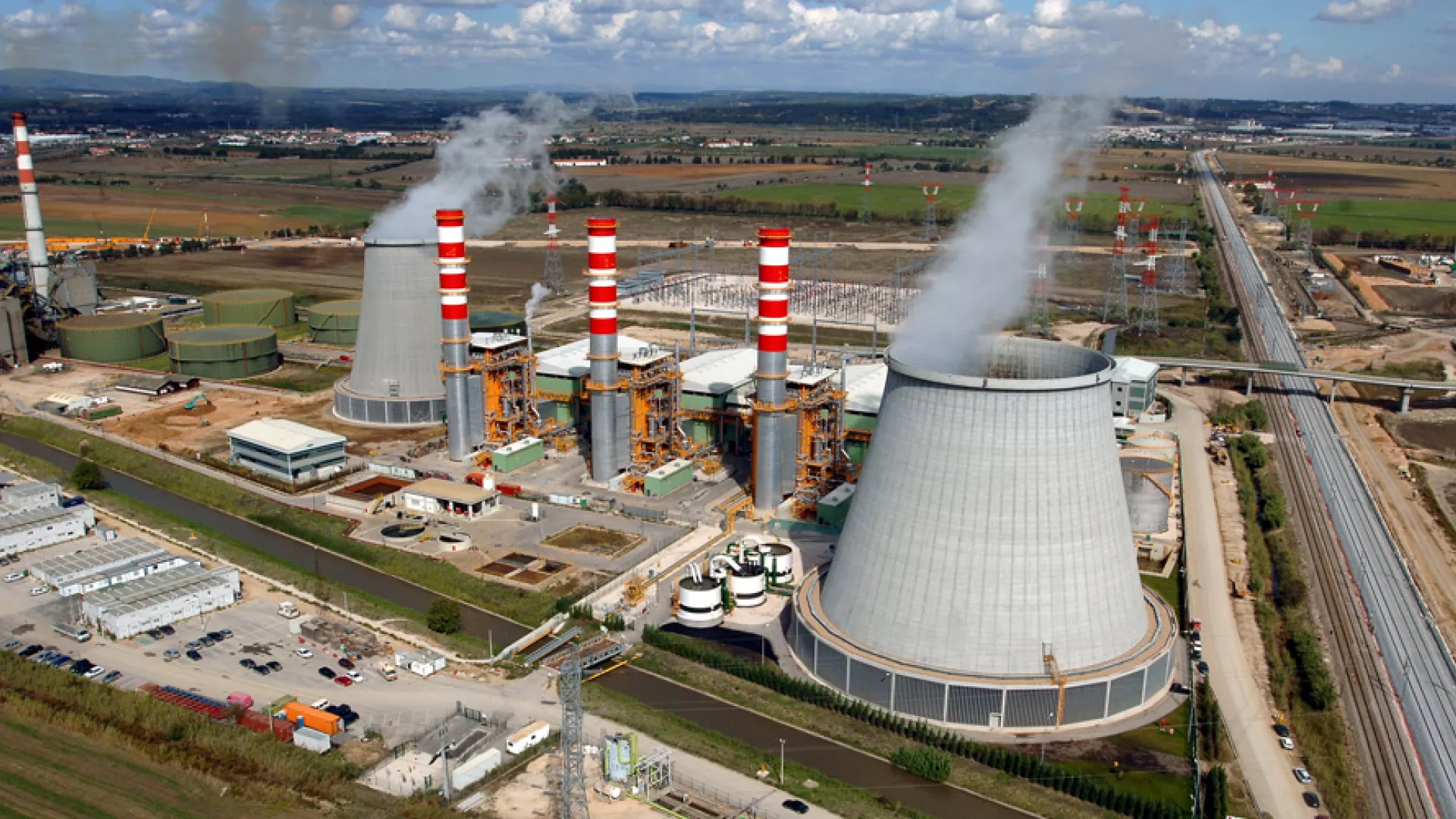
FLEXnCONFU: Power-to-X-to-Power to increase the flexibility of thermal power plants
What is FLEXnCONFU and when did it start?
FLEXnCONFU is a European innovation project funded by the Horizon 2020 program. Launched in April 2020, the FLEXnCONFU project aims to develop and integrate new solutions to increase the flexibility of combined cycle power plants through the integration of unconventional fuels, such as hydrogen and ammonia, to test the compatibility and efficiency of combustion systems and new solutions for the energy transition.
FLEXnCONFU is coordinated by RINA-C and brings together 21 partners from 10 countries, with a total budget of €12.6 million. EDP plays a leading role in the development and implementation of the hydrogen pilot at the Ribatejo Power Plant, with the support of major players in the fields of research, technology, and industry.
The funding from the Horizon 2020 program underscores the strategic importance for the European energy transition.
Pilots and demonstrators
- Pilot project for hydrogen production and co-combustion with natural gas at the Ribatejo CCGT (P2H2P), Carregado (Portugal), tested in an industrial environment
- Pilot project for ammonia production and combustion in a microturbine (P2A2P), at the University of Savona (Italy), tested in a laboratory environment
- Combustion tests of different mixtures of hydrogen and ammonia with natural gas, at Cardiff University (United Kingdom), in a laboratory environment.
Given that this is a European pilot project that aims to demonstrate the flexibility of combined cycle power plants through the integration of hydrogen and ammonia as energy storage vectors, its uniqueness lies in its real industrial application, with large-scale testing at the Ribatejo Power Plant and in the combination of power-to-hydrogen-to-power (P2H2P) technologies, something that is still relatively unexplored in the sector.
What is water electrolysis?
Water electrolysis is the process of separating water molecules (H₂O) into their hydrogen (H₂) and oxygen (O₂) components by applying an electric current. When powered by renewable energy, this process generates hydrogen molecules without carbon emissions. Electrolyzers are essential for the sustainable production of clean fuels for various sectors, particularly where direct electrification is difficult. End uses include blending into the gas grid, industry decarbonization, long-distance transport, power generation, and export. This integrated approach shows how hydrogen can enhance the flexibility and sustainability of the energy system, facilitating deep decarbonization, especially in heavy industry and transport.
The Hydrogen Pilot Project in Ribatejo
- Innovation: EDP's first hydrogen molecule produced in Europe using a 1.25 MW Cummins PEM electrolyzer, the largest in the country.
- Hydrogen use: 1% H₂ injected upstream of the gas turbine in Group 2 of the Ribatejo CCGT.
- Hydrogen storage: ~400 kg at 200 bar.
- Hydrogen pilot coordinator: EDP
- Partners involved: Cummins, ICI Caldaie, MAS, RINA-C, CNET
EDP is leading the development and implementation of the hydrogen production pilot and its integration into the Ribatejo Combined Cycle Power Plant.
After five years of development, the project has reached a historic milestone: the production of EDP's first hydrogen molecule (H₂) in Europe, using a 1.25 MW electrolyzer, the largest in the country to date. This achievement reflects EDP's commitment to innovation and sustainability, in line with national and European decarbonization goals.
The pilot will be in operation until early 2026, and the results obtained will serve as a basis for analyzing EDP's future investments in hydrogen production and integration.
- Demonstrate the production of EDP's first hydrogen molecule in Europe.
- Reinforce EDP's image as an innovative company and leader in the energy transition.
- Raise public awareness of EDP's central role in technological innovation.
- Pave the way for future projects, connecting this milestone to initiatives such as GreenH2Atlantic (100 MW, Sines, Portugal).
How does the hydrogen Pilot Work?
The FLEXnCONFU hydrogen pilot project in Ribatejo demonstrates the complete cycle of the hydrogen molecule: renewable energy (e.g., wind or solar) powers a state-of-the-art PEM electrolyzer that splits water into hydrogen and oxygen. The hydrogen produced in the electrolyzer is compressed to 200 bar and stored in standard cylinders with a gross capacity of around 400 kg.
The hydrogen is then used on site as fuel, mixed with natural gas, in the gas turbine.
- April 2020: Project launch.
- 2021: Basic engineering.
- 2021-2022: Licensing.
- 2022: Detailed engineering, equipment procurement, and manufacturing.
- April-May 2023: Arrival and installation of the largest 1.25 MW PEM electrolyzer in Portugal, in Ribatejo.
- September 2023: Full integration of the pilot into the Ribatejo combined cycle power plant, allowing for more flexible operation and opening the door to new models of hydrogen storage and price arbitrage.
- June 2024: Commissioning phase completed.
- April 2025: Successful production and injection of the hydrogen molecule at the Ribatejo plant.
- May-July 2025: Experimental service of the hydrogen pilot.
- July 2025: Demonstration period.
- September 2025: EDP's first hydrogen molecule in Europe is celebrated at an official event.
The role of EDP and the R&D Centre
EDP is the driving force behind FLEXnCONFU, leading the Ribatejo demonstrator and coordinating efforts with 21 international partners. The company is investing in its more than 90% renewable capacity to develop new models for hydrogen integration. Through pioneering industrial-scale demonstrations, EDP supports national and European climate goals, laying the foundations for projects such as GreenH2Atlantic.
EDP's R&D Center supports the demonstration process in Ribatejo. It also plays a central role in:
- Defining use cases for power-to-hydrogen solutions in providing services to the electrical system;
- Studying the use of hydrogen in other areas, such as mobility and gas pipeline injection;
- Assessing the impact of the demonstrator in terms of flexibility and reducing the environmental footprint.
The technological expertise and infrastructure developed through FLEXnCONFU will contribute to significant upcoming projects, including GreenH2Atlantic (100 MW), which will reinforce Portugal's and EDP's position as pioneers in the production of large-scale hydrogen molecules.



